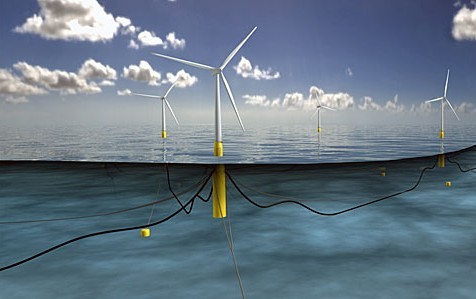
Struggling to end their reliance on expensive fossil fuels for power generation, Spain’s Canary Islands are set to become a test bed for the latest technology in wind energy.
The islands situated more than 600 miles south of the Iberian peninsula have limited space for renewables such as solar and wind farms, and the surrounding waters quickly become too deep for traditional offshore foundations.
One solution is making wind turbines that float, a pioneering technology with the potential to deploy electric generation plants beyond the sight of tourists on the beach.
The Norwegian energy giant Equinor ASA has plans for a floating wind project in the Spanish archipelago, while pilot designs are underway in France, Scotland and Portugal.
Those developments are part of a broader effort to unlock new sources of energy for small islands, which face some of the most devastating effects of climate change but lack the space to make easy changes.
“Land is not available, and what is available is protected,” said Alexandra de Marichalar, head of energy advisory and innovation for consultancy Enzen in Spain.
“Offshore renewables are the only way for the Canary Islands to achieve renewable energy penetration targets.”
The work highlights Spain’s effort to decarbonize its economy, which is under scrutiny this week as envoys from more than 200 nations meet in Madrid at the annual United Nations talks on global warming.
Spain is under pressure to act to reach European Union targets and meet the pledges set out for the 2015 Paris Agreement on climate change.
Renewable power sources fed about 11% of the Canary Islands’ electricity in 2018, compared with about 40% in Spain’s mainland, according to the country’s grid operator.
While the climate is sunny and there’s plenty of wind on the Canaries, the limited land surface holds back the installation of large renewable power installations.
Recommended for you
